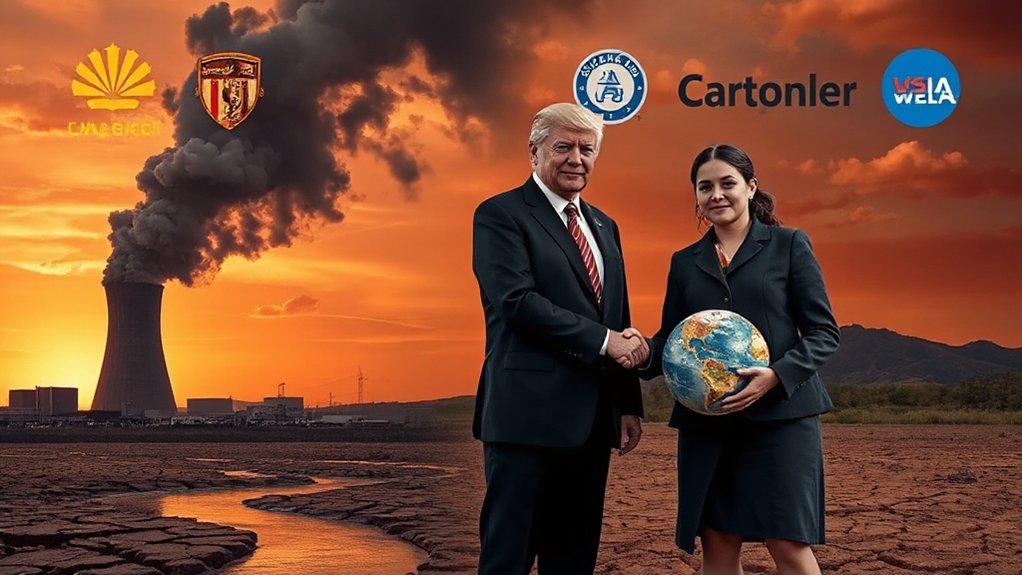Forests act as Earth’s natural carbon scrubbers, removing 16 billion metric tons of CO2 annually. They offset about half of fossil fuel emissions, with U.S. forests capturing over 800 million tons yearly. However, this defense system faces threats from deforestation, wildfires, and climate change. While temperate forests have increased carbon absorption by 30%, tropical and boreal forests show concerning declines. The future effectiveness of this essential climate solution depends on forest protection and management strategies.
As climate scientists sound the alarm on rising carbon dioxide levels, Earth’s forests stand as silent heroes in the battle against climate change. Each year, these global woodlands absorb an impressive 3.5 billion metric tons of carbon, nearly half of all CO2 emissions from fossil fuels between 1990 and 2019. In total, they remove about 16 billion metric tonnes of CO2 annually from our atmosphere.
Earth’s forests silently combat climate change, absorbing 16 billion metric tonnes of CO2 annually from our atmosphere.
Not all forests are performing equally in this essential role. Boreal forests have seen a 36% decline in their carbon sink capacity, while tropical forests show a 31% decrease due to ongoing deforestation. The good news comes from temperate forests, which have increased their carbon absorption by 30%. Research combines long-term ground measurements with remote sensing data to provide these detailed assessments. In the United States, forests capture over 800 million tons of carbon each year, offsetting about 12% of the country’s emissions.
Where exactly is this carbon stored? Most people might be surprised to learn that 56.4% of forest carbon is held in the soil, not in the trees themselves. Aboveground biomass accounts for 27.7% of stored forest carbon. Both these storage components have grown over time, with belowground biomass increasing by 19.1% and aboveground biomass by 18.6% between 1990 and 2016.
Several threats endanger this natural carbon capture system. Deforestation remains the primary concern in tropical areas, while wildfires pose major risks in boreal and western U.S. forests. Climate change itself is altering forest growth patterns, creating a troubling feedback loop. This destruction of forests contributes to approximately twenty percent of global greenhouse gas emissions. Reforestation efforts help mitigate these threats while providing critical wildlife habitats for thousands of species.
Looking ahead, scientists worry that climate change may weaken forest carbon sinks. Western U.S. forests already show declining tree growth rates. Some forests might even shift from being carbon sinks to carbon sources.
Despite these challenges, forests remain Earth’s most effective natural defense against rising carbon levels. The future of our climate depends partly on how well we protect and manage these significant ecosystems.








